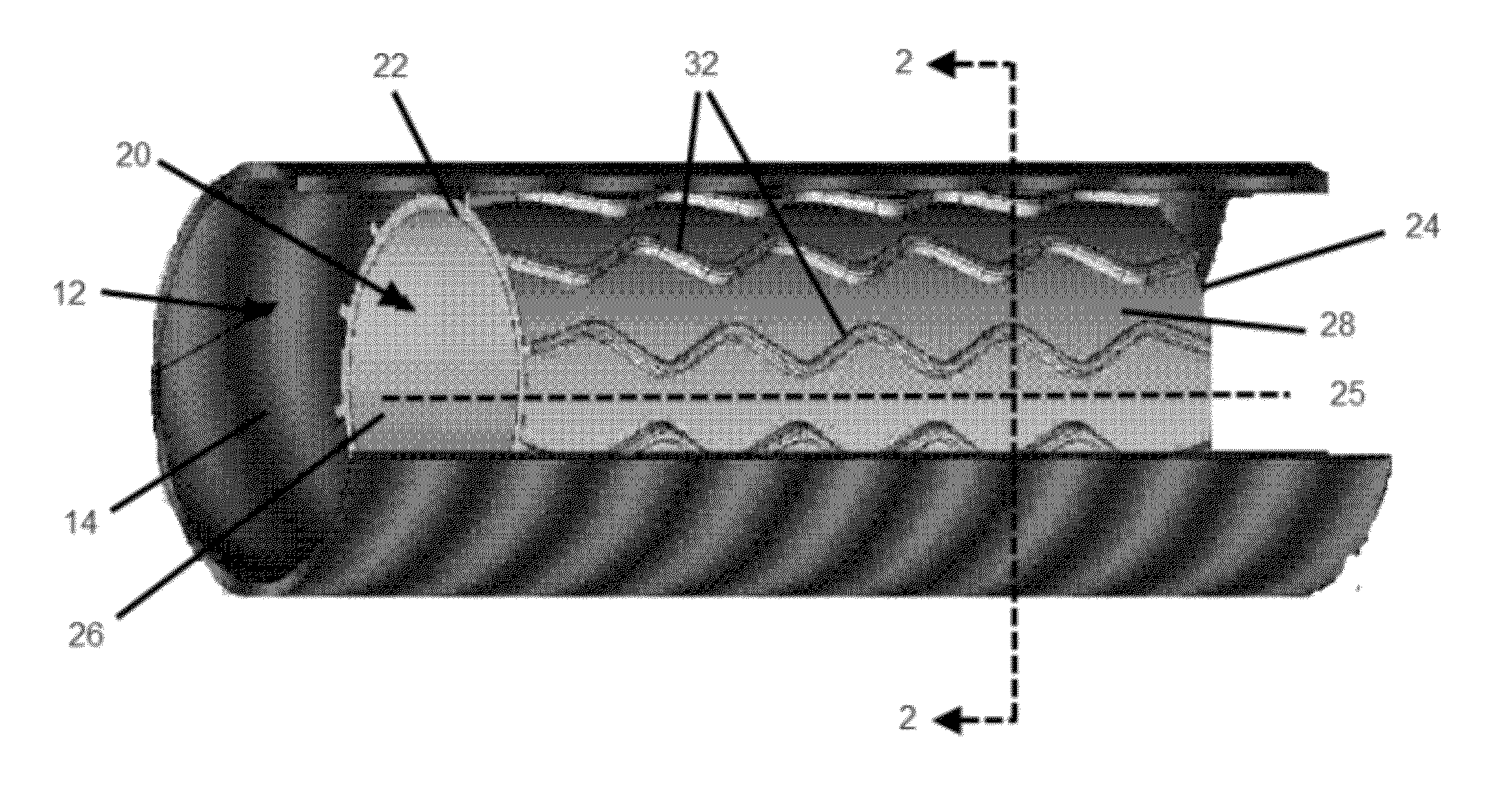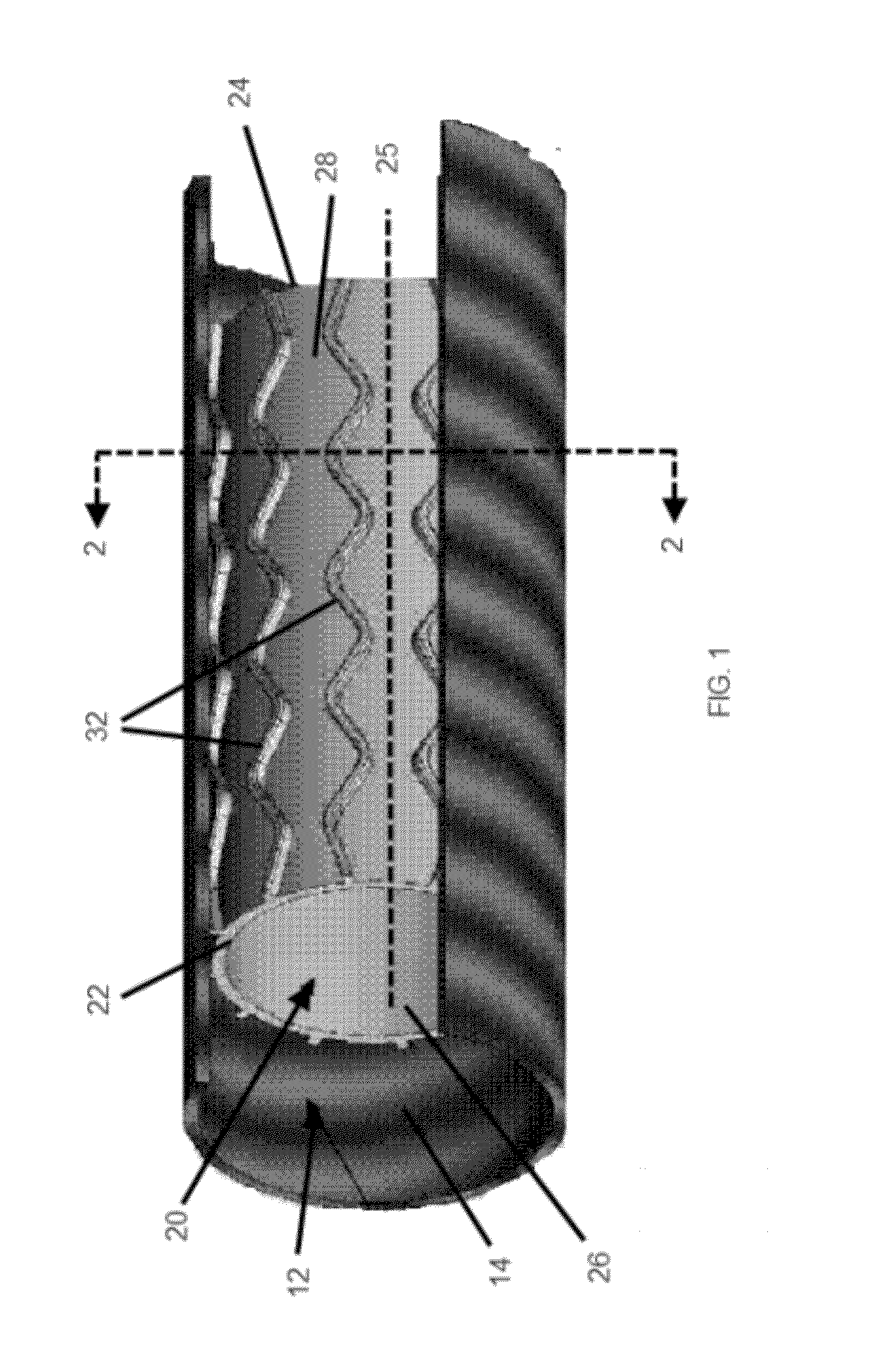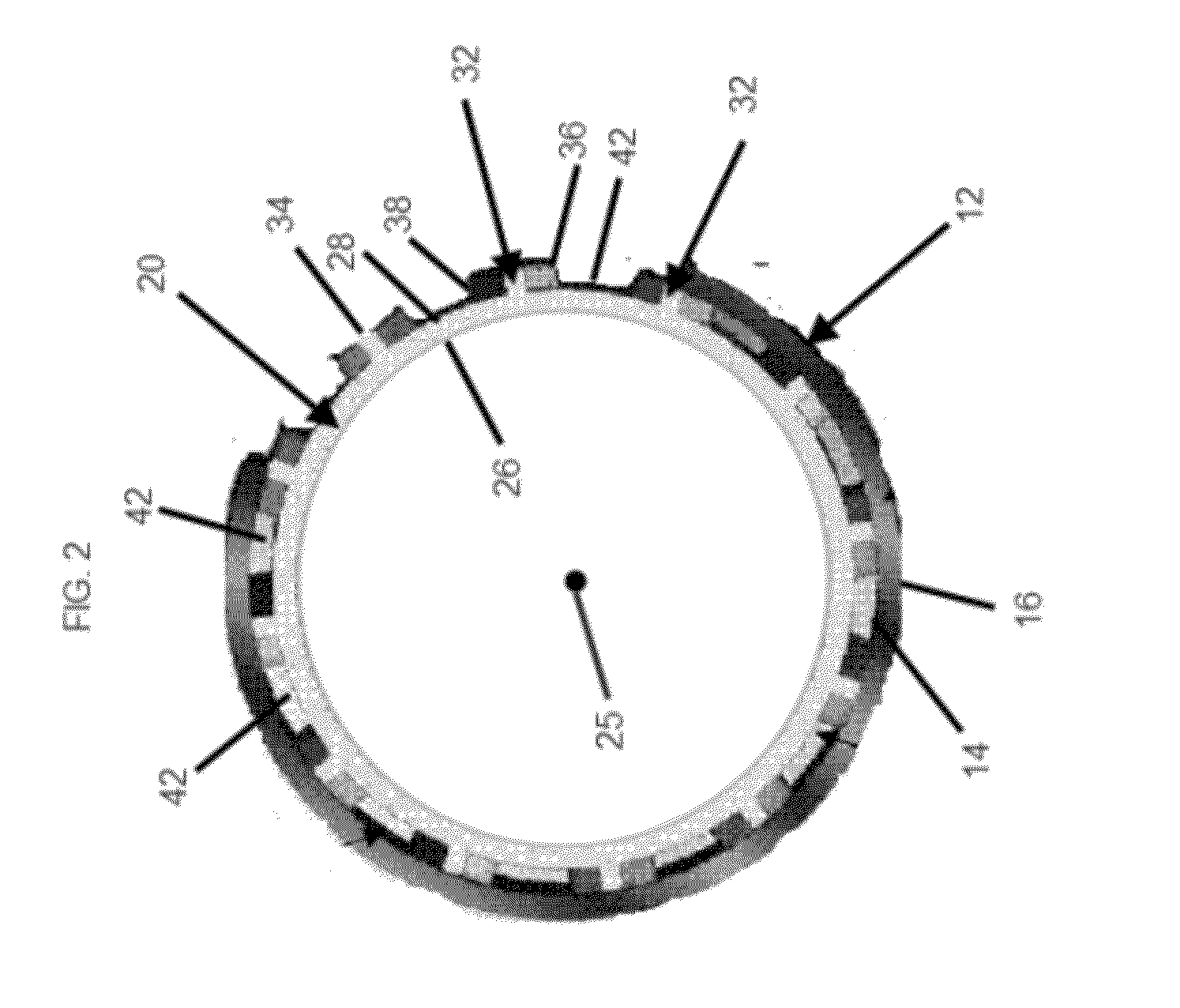Tracheal Stent With Longitudinal Ribs to Minimize Stent Movement, Coughing and Halitosis
a tracheal stent and longitudinal rib technology, applied in the field of tracheal stent with longitudinal ribs to minimize stent movement, coughing and halitosis, can solve the problems of displacement of the stent within the trachea, excessive coughing in the respiratory tract, and buildup of phlegm
- Summary
- Abstract
- Description
- Claims
- Application Information
AI Technical Summary
Benefits of technology
Problems solved by technology
Method used
Image
Examples
Embodiment Construction
[0035]While this invention may be embodied in many different forms, there are described in detail herein specific preferred embodiments of the invention. This description is an exemplification of the principles of the invention and is not intended to limit the invention to the particular embodiments illustrated.
[0036]For the purposes of this disclosure, like reference numerals in the figures shall refer to like features unless otherwise indicated.
[0037]An embodiment of a stent of the present invention deployed in a trachea is shown in FIG. 1. The trachea 12 has an inner surface 14. The inner surface 14 forms the lumen of the trachea 12, and a plurality of cilia (not shown) line the inner surface 14. Stent 20 is shown deployed in the lumen of the trachea 12. In at least one embodiment, stent 20 is an expandable tubular member 21 that has a proximal end 22, a distal end 24, a longitudinal axis 25 extending through the proximal end 22 and the distal end 24, an inner surface 26, and an ...
PUM
 Login to View More
Login to View More Abstract
Description
Claims
Application Information
 Login to View More
Login to View More - R&D
- Intellectual Property
- Life Sciences
- Materials
- Tech Scout
- Unparalleled Data Quality
- Higher Quality Content
- 60% Fewer Hallucinations
Browse by: Latest US Patents, China's latest patents, Technical Efficacy Thesaurus, Application Domain, Technology Topic, Popular Technical Reports.
© 2025 PatSnap. All rights reserved.Legal|Privacy policy|Modern Slavery Act Transparency Statement|Sitemap|About US| Contact US: help@patsnap.com



